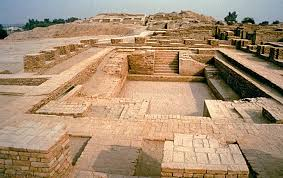Mohenjo-Daro, one of the most advanced cities of the ancient Indus Valley Civilization, continues to intrigue archaeologists and historians with its well-planned urban design and enigmatic history. Among its many mysteries, the disappearance of its rulers remains one of the most puzzling. What happened to the leaders of this once-thriving city? Why do we find so little evidence of their existence? Let’s explore the possibilities surrounding the enigmatic disappearance of Mohenjo-Daro’s rulers.
Introduction
How does a civilization as advanced as the Indus Valley vanish without leaving clear evidence of its political hierarchy? Mohenjo-Daro, often called the “mound of the dead,” holds secrets that have baffled researchers for decades. Despite its remarkable urban planning, including drainage systems, granaries, and baths, no conclusive evidence of kings, queens, or centralized rulers has been discovered. Could this be a case of lost records, or was Mohenjo-Daro governed in an entirely unique way?
What Was Mohenjo-Daro?
Mohenjo-Daro, established around 2500 BCE, was one of the largest cities of the Indus Valley Civilization, which spanned parts of modern-day India, Pakistan, and Afghanistan. It was a hub of trade, culture, and innovation, home to tens of thousands of residents. The city was distinguished by its grid-like streets, advanced water management systems, and standardized construction methods.
The Enigma of Leadership in Mohenjo-Daro
Unlike other ancient civilizations such as Mesopotamia or Egypt, the Indus Valley Civilization has left no direct evidence of kings, palaces, or monumental temples. This absence has led to speculation about the nature of its leadership. Did Mohenjo-Daro have rulers at all, or was it governed by a collective system?
Archaeological Clues and Their Limitations
Excavations at Mohenjo-Daro have unearthed a wealth of artifacts, from seals and pottery to jewelry and tools. However, none of these artifacts explicitly point to a ruling class. Unlike the grand tombs of Egyptian pharaohs or the inscriptions of Mesopotamian kings, Mohenjo-Daro offers no clear markers of individual power or authority.
The Great Bath: A Clue to Power?

One of the most iconic structures of Mohenjo-Daro is the Great Bath, a large, meticulously constructed water tank. Some researchers speculate that this structure may have had a religious or ceremonial significance, hinting at a priestly ruling class. However, there is no definitive evidence to confirm this theory.
Also Read: Learning a new coding language: A beginner’s guide
Theories on the Disappearance of Mohenjo-Daro’s Rulers
1. Egalitarian Governance
One theory suggests that Mohenjo-Daro might have been governed by an egalitarian system, where power was distributed among various groups rather than centralized in a monarchy. The uniformity of its urban planning and lack of ostentatious structures support this idea.
2. Environmental Collapse
Environmental changes, such as shifting river courses or drought, may have disrupted the city’s socio-political structure. If the natural resources that sustained the city dwindled, its leaders might have lost their authority, leading to societal collapse.
3. Invasion or Conflict
Some scholars propose that Mohenjo-Daro was invaded by an outside force, such as the Aryans. However, there is limited archaeological evidence of warfare or destruction, making this theory contentious.
4. Disease or Epidemic
An outbreak of disease could have decimated the city’s population, including its ruling class. The lack of written records makes it impossible to confirm this theory, but the possibility remains.
5. Decline of Trade Networks
Mohenjo-Daro thrived on trade with neighboring regions. A collapse in these trade networks due to external factors could have destabilized the city’s economy and leadership.
Absence of Written Records
One of the most perplexing aspects of the Indus Valley Civilization is its undeciphered script. Thousands of seals and inscriptions have been discovered, but their meanings remain unknown. It’s possible that records of Mohenjo-Daro’s rulers exist but remain locked behind this linguistic barrier.
Comparison with Other Ancient Civilizations
In contrast to Mohenjo-Daro, civilizations like Mesopotamia, Egypt, and China have left extensive records of their rulers. This raises questions about why the Indus Valley Civilization followed a different trajectory. Did they prioritize communal harmony over individual legacy, or have crucial pieces of evidence simply been lost to time?
The Role of Religion in Governance
Some researchers speculate that religion played a central role in Mohenjo-Daro’s governance. The Great Bath and other structures suggest ritualistic activities, potentially indicating the presence of a theocratic ruling class. However, without concrete evidence, this remains speculative.
Migration and Assimilation
Another possibility is that the rulers of Mohenjo-Daro migrated elsewhere as environmental or economic conditions deteriorated. They may have assimilated into other cultures, leaving behind no clear trace of their political structure.
The Mystery of the Figurines
Artifacts such as the famous “Priest-King” statue and numerous terracotta figurines have sparked debates about their significance. While the “Priest-King” suggests the existence of a ruling figure, it’s unclear whether this individual held political, religious, or symbolic authority.
The Decline of Mohenjo-Daro
By around 1900 BCE, Mohenjo-Daro was largely abandoned. The reasons for its decline remain speculative, with theories ranging from environmental disasters to societal shifts. The disappearance of its rulers may have been part of this larger collapse.
Modern Efforts to Solve the Mystery
Advances in technology, such as satellite imagery and chemical analysis, have provided new insights into Mohenjo-Daro. However, the mystery of its rulers continues to elude researchers. Efforts to decipher the Indus script may one day shed light on this enigma.
The Legacy of Mohenjo-Daro
Despite the mystery surrounding its rulers, Mohenjo-Daro stands as a testament to the ingenuity and resilience of the Indus Valley Civilization. Its achievements in urban planning, trade, and craftsmanship continue to inspire awe.
Conclusion
The disappearance of Mohenjo-Daro’s rulers remains one of history’s greatest puzzles. Whether they were egalitarian leaders, theocrats, or something entirely unique, their legacy endures in the city’s remarkable achievements. As research continues, we may one day uncover the truth behind this ancient enigma, shedding light on a civilization that was far ahead of its time.
FAQs
1. Why is Mohenjo-Daro significant?
Mohenjo-Daro was one of the largest cities of the Indus Valley Civilization, known for its advanced urban planning and innovative water management systems.
2. What evidence exists of rulers in Mohenjo-Daro?
There is little direct evidence of rulers in Mohenjo-Daro, as no palaces, tombs, or inscriptions clearly indicate a ruling class.
3. What theories explain the disappearance of Mohenjo-Daro’s rulers?
Theories include egalitarian governance, environmental collapse, invasion, disease, or the decline of trade networks.
4. What is the significance of the Great Bath in Mohenjo-Daro?
The Great Bath is believed to have had religious or ceremonial significance, potentially hinting at theocratic governance or communal rituals.
5. Why is the Indus script important?
The undeciphered Indus script may hold crucial information about Mohenjo-Daro’s rulers, society, and culture, offering answers to long-standing mysteries.
Meta Description: Uncover the mystery of Mohenjo-Daro’s rulers and explore theories about their disappearance in this deep dive into the ancient Indus Valley Civilization.


